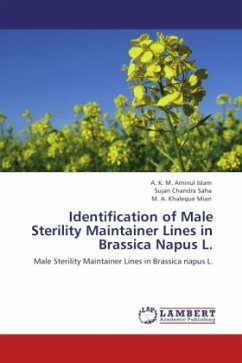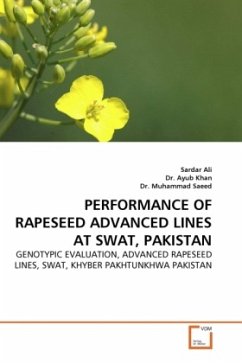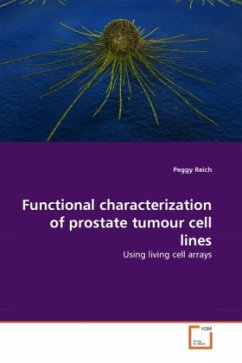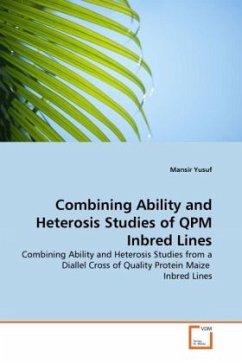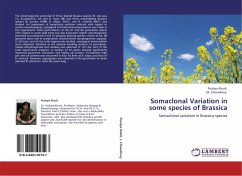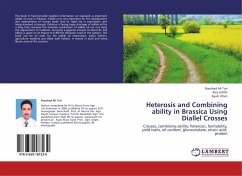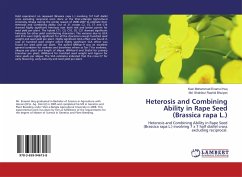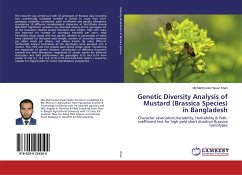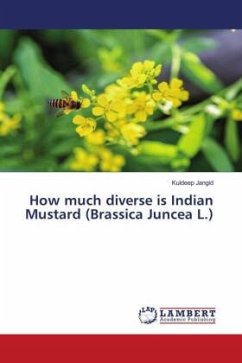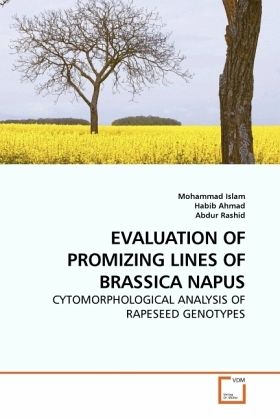
EVALUATION OF PROMIZING LINES OF BRASSICA NAPUS
CYTOMORPHOLOGICAL ANALYSIS OF RAPESEED GENOTYPES
Versandkostenfrei!
Versandfertig in 6-10 Tagen
32,99 €
inkl. MwSt.

PAYBACK Punkte
16 °P sammeln!
Rapseed is a recently introduced highly promising cash crop in the developing world. Its successful introduction is possible only through developing and testing of improved plant types.This monograph communicates the result regarding a locally developed advance line viz. HS-98, tested agianst four commercial varieties, Dunkled, Rainbow, Oscar and Altex. ANOVA of leaf area, plant height, inflorescence length, days to flowering, beak length, pods per plant, seed per pod and stem thickness were highly significant. Whereas branches per plant, flowering duration, radical leaves and days to 50% flow...
Rapseed is a recently introduced highly promising cash crop in the developing world. Its successful introduction is possible only through developing and testing of improved plant types.This monograph communicates the result regarding a locally developed advance line viz. HS-98, tested agianst four commercial varieties, Dunkled, Rainbow, Oscar and Altex. ANOVA of leaf area, plant height, inflorescence length, days to flowering, beak length, pods per plant, seed per pod and stem thickness were highly significant. Whereas branches per plant, flowering duration, radical leaves and days to 50% flowering were non-significant. LSD for the data revealed that genotype HS-98 was significantly different with respect to inflorescence length, pod/plant, pod length, seed/ pod, days to flowering and 1000 grains weight. Glucosinolates, oleic acid and eruic acid percentage were highly significant among the genotypes. Pollen fertility was 93% in HS-98. The number of bivalents and chiasma were 950,1513, respectively in 50 sporocytes. The No. of ring, rod bivalents, chiasma/cell and chiasma/bivalent were 11.18, 7.82, 30.26 and 1.58, respectively.



